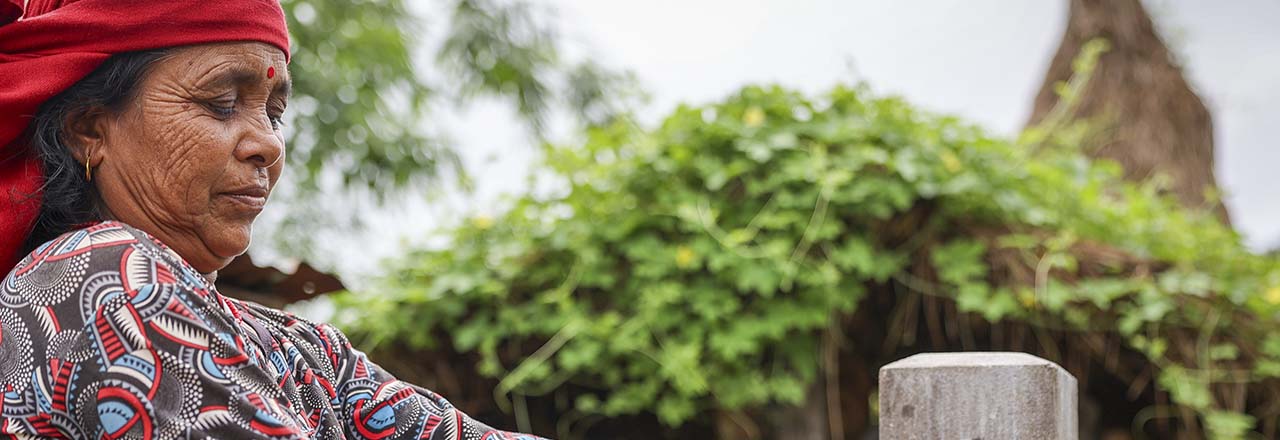

Rebuilding After an Earthquake in Nepal
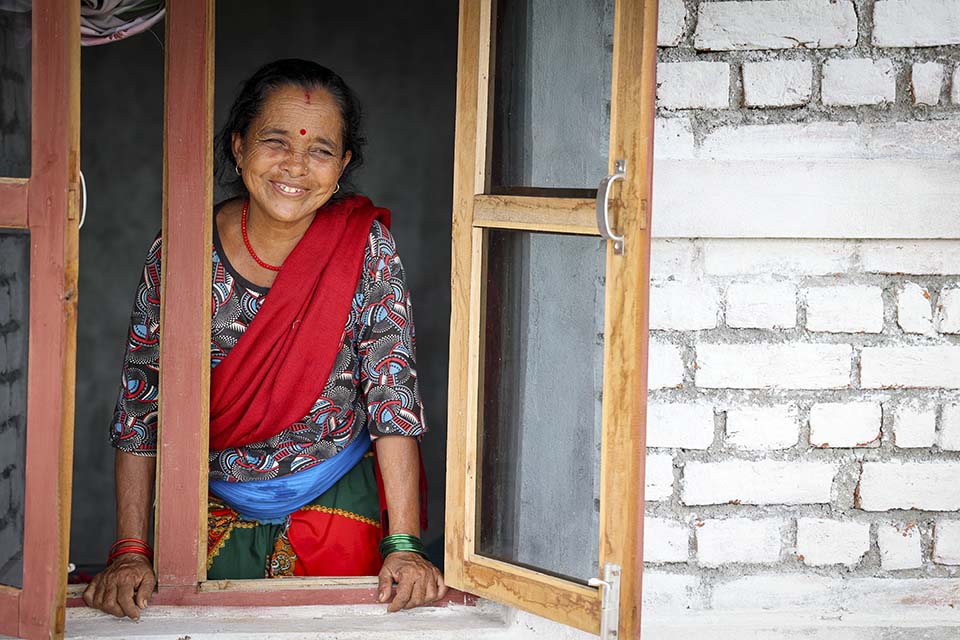
Sabitri Pariyar is a CRS program participant from Myagde, Nepal. After her home was damaged in the 2015 earthquake, she received a new earthquake-resilient house.
Benny Manser/CRS
In the Tanahun district of Nepal, Sabitri Pariyar recalls the moment when she realized an earthquake was taking place. It was April 25, 2015. Sabitri was doing chores around her home when suddenly, everything began to shake.
“I was more concerned about my grandchildren than myself,” she says. “I was screaming their names, trying to get them back. My son told me to sit on the ground and not move. And even when I was sitting, the ground was shaking so much.”
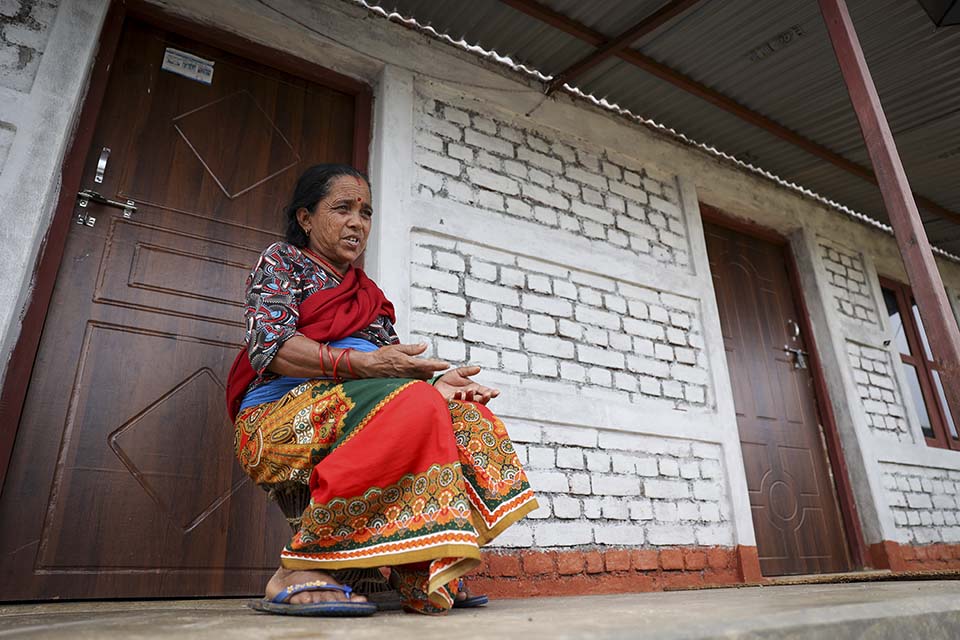
Sabitri Pariyar, one of the CRS program participants from Tanahun district of Nepal. Sabitri’s previous home was damaged after an earthquake. She received a new earthquake-resilient house from CRS.
Photo by Benny Manser/CRS
The earthquake that struck Nepal killed nearly 9,000 people and injured more than 22,000. It also damaged or destroyed more than 800,000 houses, leaving millions of people homeless and vulnerable—Sabriti and her family were among them. Her home of nearly 30 years was damaged to the point of being unsafe. Fearing another quake or collapse, she and her family slept outside in a makeshift shelter, but that presented other threats.
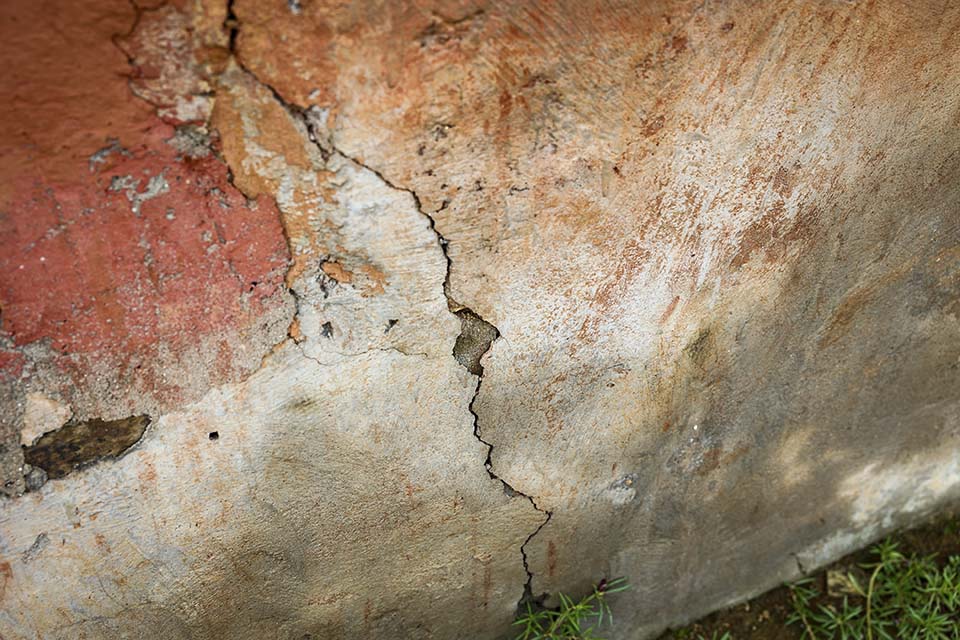
Sabitra Pariyar's house was damaged during the 2015 earthquake in Nepal.
Photo by Benny Manser/CRS
“If we slept outside, I was more scared about wild animals coming and taking away my grandchildren,” she says. “So, I was up most of the time taking care of my grandchildren. I didn't let anybody stay in the old house because I was constantly in fear that it might collapse.”
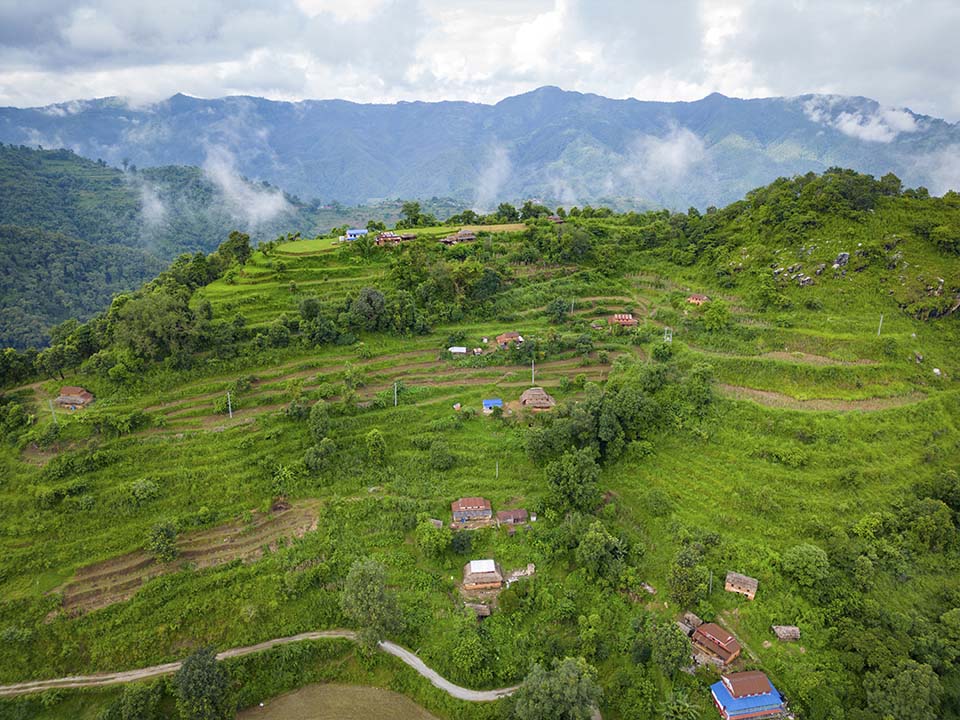
Sabitri Pariyar's community and her new earthquake-resistent house, which can be seen at the top left with a blue roof.
Photo by Benny Manser/CRS
After the earthquake, Sabitri's family, who had farmed, raised livestock and worked as laborers to make a living all lost their livelihoods. They couldn’t afford to build a new home.
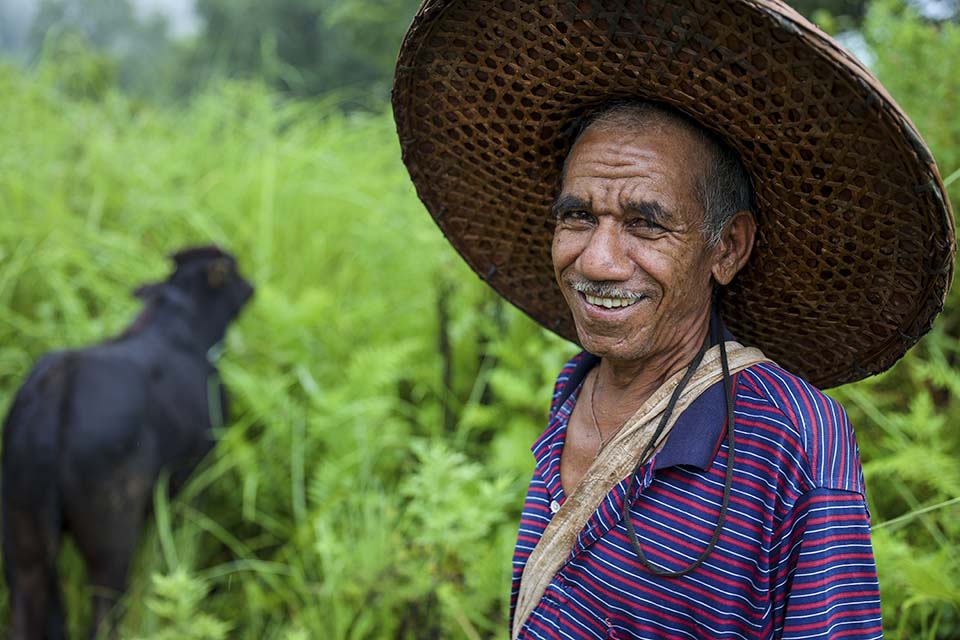
Mangal Singh Pariyar tends cattle in the Tanahun district of Nepal. Mangal and his wife Sabitri Pariyar, were among the families identified by CRS to receive a fully constructed earthquake-resilient house.
Photo by Benny Manser/CRS
The local government was assessing damage and identifying people who needed sufficient shelter. But given the scale of damage, Sabitri waited months to receive any resources.
As part of the Resilient Communities through Vulnerable Earthquake Recovery project, or ReCoVER, Catholic Relief Services and local partners were in Nepal helping construct new homes, provide livelihoods support, and ensure access to clean water, sanitation and hygiene. The project reached 6,240 families, including Sabriti’s.
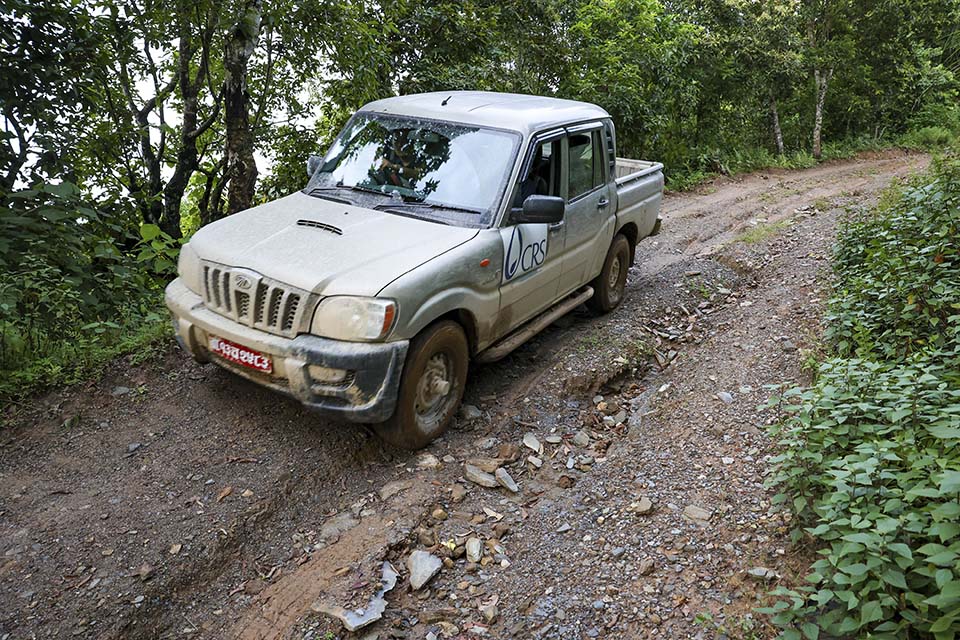
A CRS vehicle navigates a road in Nepal. Photo by Benny Manser/CRS
While waiting for construction to begin, Sabriti and her family cleared a path from the main road to the site of her new home so that laborers could transport materials quickly and easily. Once building started, the house took 28 days to complete.
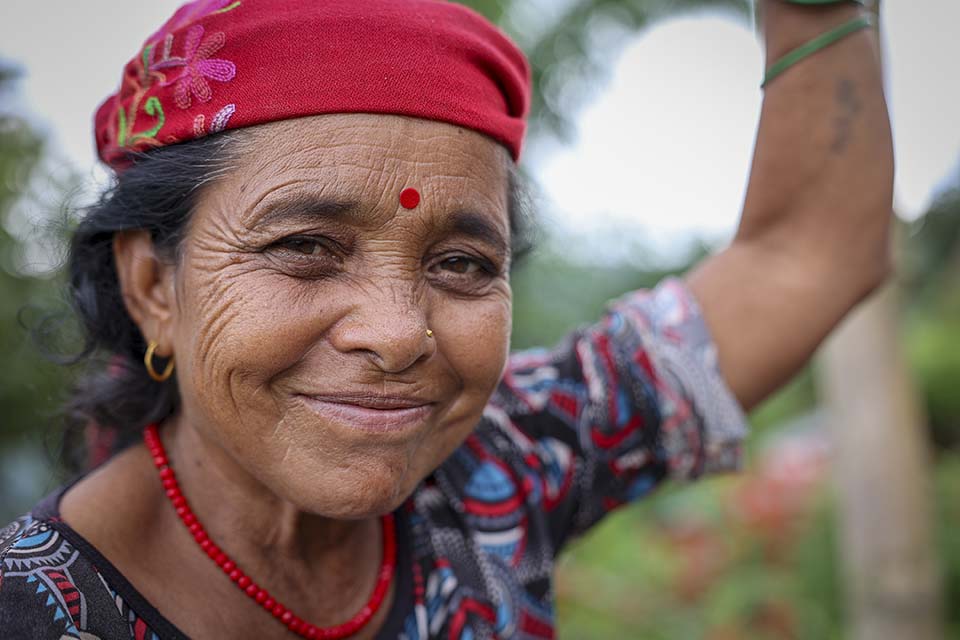
Sabitri Pariyar received a new earthquake-resilient house.
Photo by Benny Manser/CRS
Sabitri recalls the first morning in her new house with her family.
"When we woke up in this house, I called my grandchildren,” she says. “We all sat up here and I asked them, ‘How do you feel?’ And my grandchild looked at me and said, ‘Grandmother, if you were not alive, we would have never got to live in this new house.’ I replied, ‘I'm going to live long for many years, so don't worry. I'm still alive and I'm strong.’”
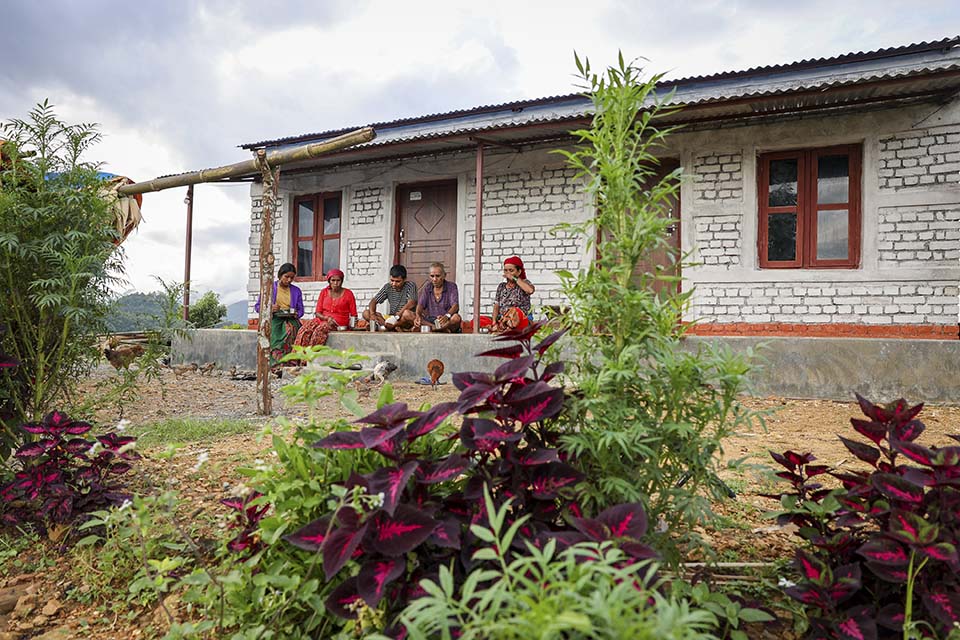
Following a busy day working in the fields and tending to cattle, Sabitri Pariyar and her family of three generations, take a moment to unwind outside their new home in Myagde, Nepal.
Photo by Benny Manser/CRS
The ReCoVER project also provided Sabitri with two goats and training on how to raise and care for them. She and her husband now receive an allowance from the government, which helps supplement their income. With more stability in a new, safe home, Sabitri and her family are looking forward to a hopeful future.
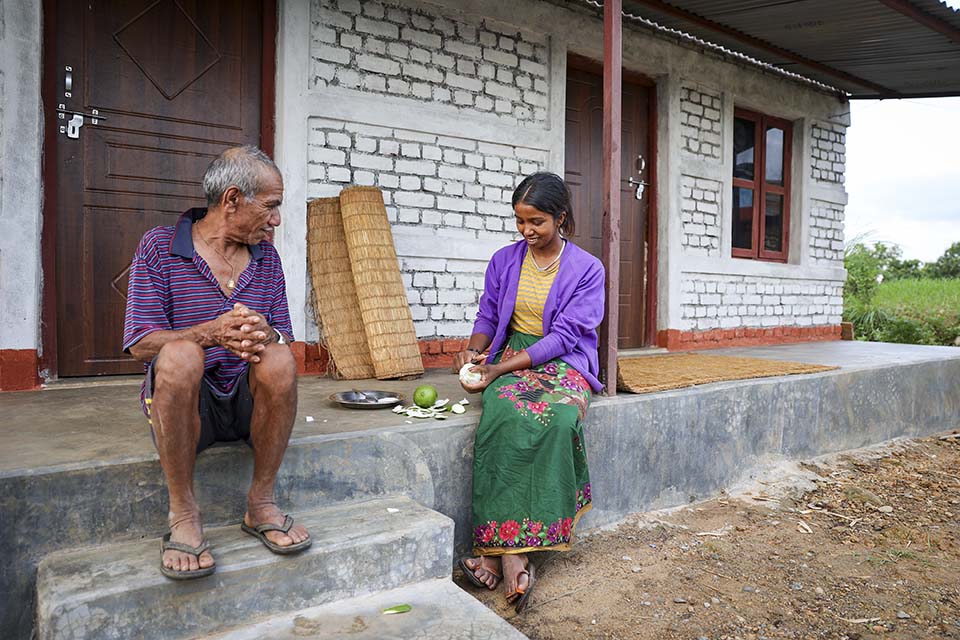
Singh Pariyar and his granddaugther share lunch outside their new earthquake-resilient home in the Tanahun district of Nepal.
Photo by Benny Manser/CRS
And while two of her three grandchildren have since left home for school, Sabitri has fond memories of their time together in their new home.
“I remember the time my grandson was sitting outside studying and I felt happy that he was enjoying the new house. We were talking and I told him, ‘Soon I'll get to see you get married and have a family. I hope I live to see that day and I get to dance at your wedding,’” she says.

